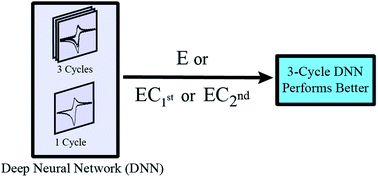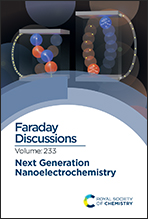Inclusion of multiple cycling of potential in the deep neural network classification of voltammetric reaction mechanisms
Abstract
The use of deep neural networks (DNNs) for the classification of electrochemical mechanisms using simulated voltammograms with one cycle of potential for training has previously been reported. In this paper, it is shown how valuable additional patterns for mechanism distinction become available when a new DNN is trained simultaneously on images obtained from three cycles of potential using tensor inputs. Significant improvements, relative to the single cycle training, in achieving the correct classification of E, EC1st and EC2nd mechanisms (E = electron transfer step and C1st and C2nd are first and second order follow up chemical reactions, respectively) are demonstrated with noisy simulated data for conditions where all mechanisms are close to chemically reversible and hence difficult to distinguish, even by an experienced electrochemist. Challenges anticipated in applying the new DNN to the classification of experimental data are highlighted. Directions for future development are also discussed.

- This article is part of the themed collection: Next Generation Nanoelectrochemistry


 Please wait while we load your content...
Please wait while we load your content...